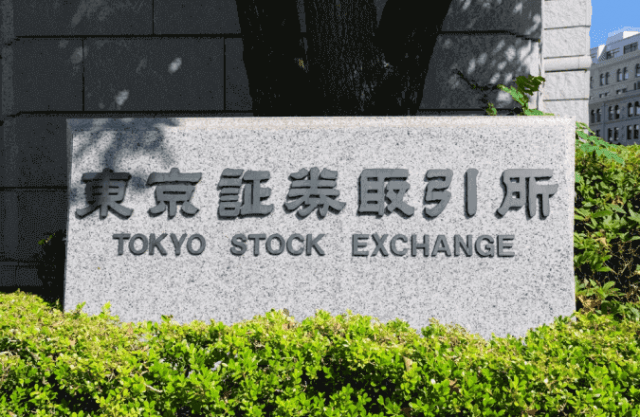How to trade the US Dollar Index

Learn all about the US Dollar Index including how it’s calculated, historical US Dollar Index price history, and how to trade DXY via CFDs on Capital.com.
What is the US Dollar Index?
The US Dollar Index (DXY), often referred to as the ‘Dixie’, is a currency index that tracks the value of the US dollar compared to six major currencies. Dow Jones & Company established the US Dollar Index in 1973 as a tool to measure the value of the dollar after the Bretton Woods agreement ended in 1971. Today, the US Dollar Index is maintained and published by the Intercontinental Exchange (ICE).
The US Dollar Index is calculated using the exchange rates between the United States dollar and the euro (added in 1999), Japanese yen, British pound, Canadian dollar, Swedish krona and the Swiss franc. As such, the US Dollar Index provides a comprehensive overview of the dollar’s strength, and is an insightful tool for forex traders.
What is the US Dollar Index price history?
The US Dollar Index (DXY) measures the dollar's strength against six major currencies. As a result, it rises when the dollar strengthens and falls when other currencies outperform it – so it’s moved a lot since its launch in 1973.
Starting at 100 points, the index experienced volatility in its early years due to events like the 1973 oil crisis and Watergate scandal. The index peaked at 120 in the mid-1980s, then dropped after the Plaza Accord and the 1987 stock market crash.
The early 1990s saw more volatility due to the Gulf War and rising oil prices, but the index recovered by 1997 due to US economic expansion. Despite the dot-com bubble burst, the index grew in 2000-2001, though it faced challenges from rising oil prices and the 2007 recession.
Quantitative easing helped the index recover in the 2010s. Events like the US credit rating downgrade in 2011 and Brexit in 2016 caused volatility, both weakening and strengthening the index. The Covid-19 pandemic led to a significant drop in March 2020 that continued into the following year.
In 2022, seven interest rate hikes boosted the index to an all-time high in October. However, as other central banks raised rates and the Fed slowed its fiscal tightening, the index dipped by the year's end. After a sustained period of growth in the second half of 2023, the index has traded in a range in 2024.
Past performance is not a reliable indicator of future results.
What factors might affect the performance of the US Dollar Index?
The US Dollar Index can be affected by a range of events. Be sure to check out our market analysis for insights into the price drivers for your favourite markets. Here are a few of the main factors to consider for the US Dollar Index:
-
US economic indicators: the US Dollar Index is tied to the economic health of the United States. So watch for GDP growth, unemployment rates, and consumer spending as possible signals for changes in the Dixie. Strong GDP growth in the US – which often signals a robust economy – relative to these other nations may boost investor confidence and propel the index upward. A rise in unemployment may undermine this confidence.
-
Monetary policy: the Federal Reserve, the central bank of the US, plays a crucial role in shaping the environment that impacts the US Dollar Index. Its decisions on interest rates are particularly influential. Higher interest rates tend to increase the value of the dollar, as they attract foreign investment, supporting US Dollar Index growth. Conversely, lower interest rates can decrease the value of the dollar by reducing the returns on investments denominated in dollars, making them less attractive to foreign investors and negatively impacting the US Dollar Index.
-
Global economic conditions: Given that the US Dollar Index is composed of currencies from six major global economies, the performance of these economies can influence the index. Keep an eye out for new trade policies, currency fluctuations, and performance of the six other economies mentioned above.
What currencies are in the US Dollar Index?
The US Dollar Index comprises six major world currencies: the euro, the Canadian dollar, the Japanese yen, the British pound, the Swiss franc, and the Swedish krona.
What are the US Dollar Index opening hours?
As a global currency benchmark, DXY trading hours run 21 hours a day Sunday to Friday on the ICE platform, with the hours depending on the time zone.
Trade DXY CFDs with Capital.com, and you can trade the index at the following times:
|
Day |
Time (UTC) |
|
Monday |
00:00-21:00 |
|
Tuesday-Friday |
00:01-21:00 |
|
Saturday |
Closed |
|
Sunday |
22:01-23:59 |
You can follow the US Dollar Index performance live with our US Dollar Index price chart.
How to trade the US Dollar Index
You can take a position on the US Dollar Index in a few different ways.
Since the Dixie is an index – so not a physical asset like a share or bar of gold – you can’t buy or sell it in concrete terms. You’ll need to use a derivative, a financial product that takes (or ‘derives’) its value from the price of the underlying index.
You could use a contract for difference, or (CFD), to trade on the index price. A CFD is a contract, typically between a broker and a trader, where one party agrees to pay the other the difference in the value of a security, between the opening and closing of the trade.
You can use CFDs to trade whether you think the US Dollar Index will rise (called ‘going long’) or fall (‘going short’). CFDs also give you access to leverage, which means that you can get exposure to larger positions with a relatively small outlay. This amplifies your potential profits, but also your potential losses, making CFD trading risky.
You can learn more about trading indices with Capital.com in our comprehensive guide to index trading.
Aside from CFDs, you can also trade the US Dollar Index through instruments like futures, options, ETFs, and mutual funds. Each offers an alternative to the leveraged trading of CFDs, catering to different risk profiles and investment strategies.
To trade CFDs with us, just sign up for a Capital.com account. Once you’re verified, you can use our easy-to-use web platform or download our mobile app.
FAQs
What is the DXY?
The DXY, or US Dollar Index, is a currency index measuring the performance of the US dollar against six currencies of the United States’ largest trading partners. It’s calculated using a weighted mean average.
How is the US Dollar Index calculated?
The US Dollar Index is calculated using a weighted mean average of six major world currencies. As of July 2024, the weightings are:
-
Euro (EUR) – 57.6%
-
Japanese Yen (JPY) – 13.6%
-
British Pound (GBP) – 11.9%
-
Canadian Dollar (CAD) – 9.1%
-
Swedish Krona (SEK) – 4.2%
-
Swiss Franc (CHF) – 3.6%
What time does the US Dollar Index open?
Choose CFDs on the US Dollar Index with Capital.com, and you can trade at the following times:
|
Day |
Time (UTC) |
|
Monday |
00:00-21:00 |
|
Tuesday-Friday |
00:01-21:00 |
|
Saturday |
Closed |
|
Sunday |
22:01-23:59 |
Visit our other complete guides

How to trade Australia 200
